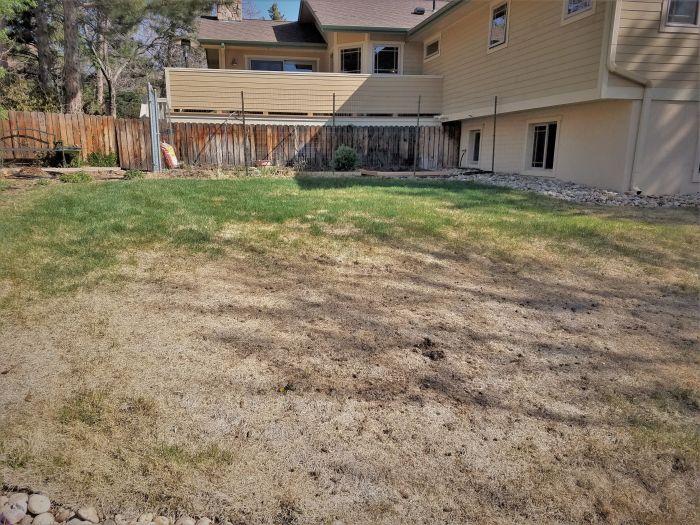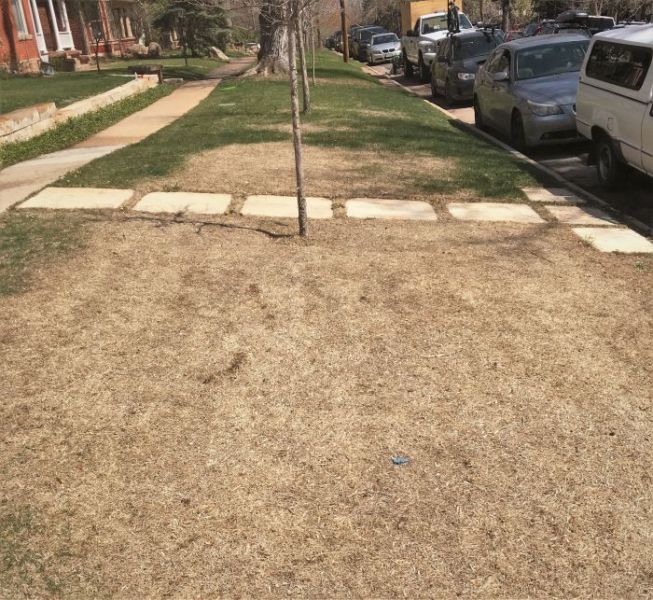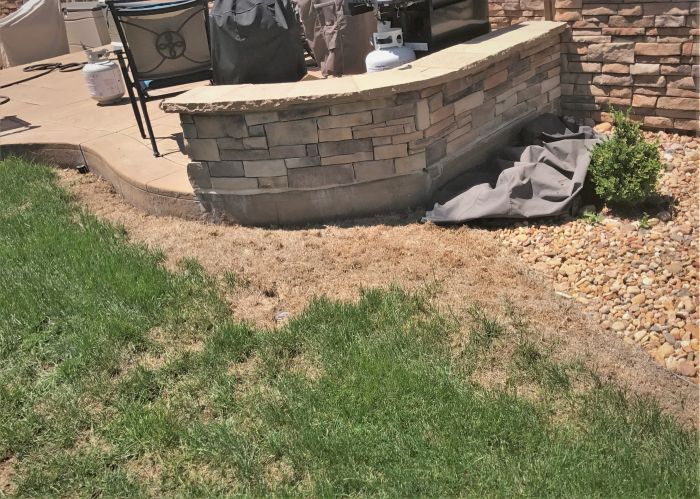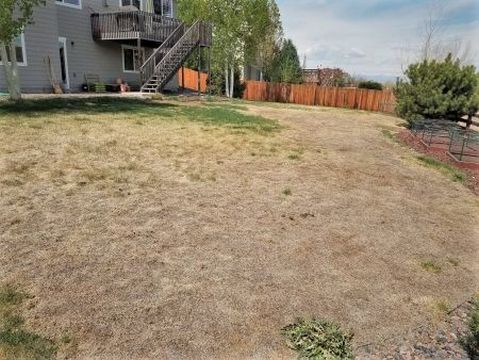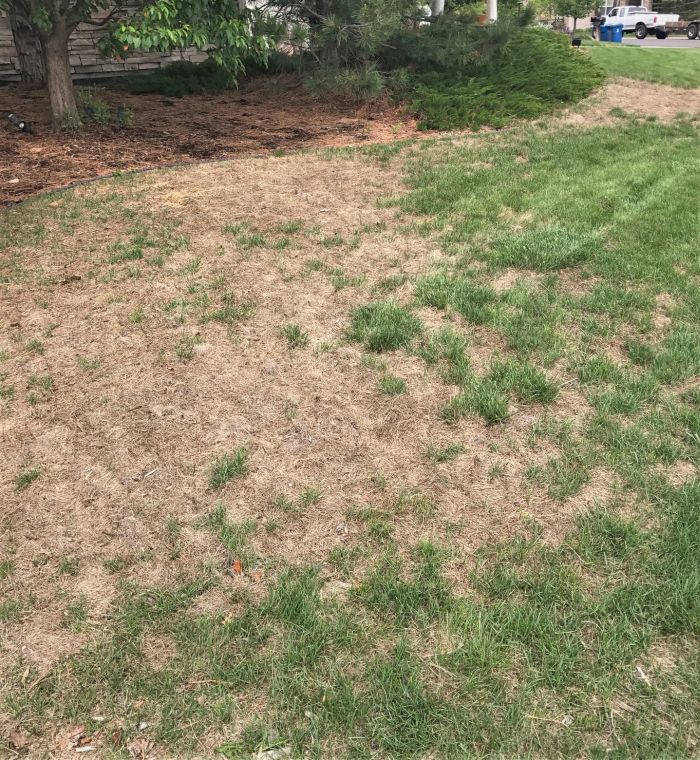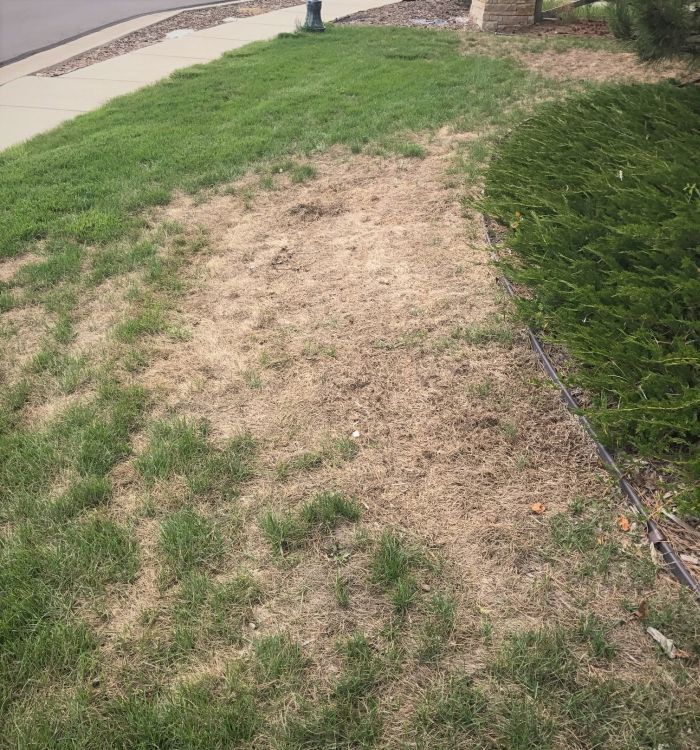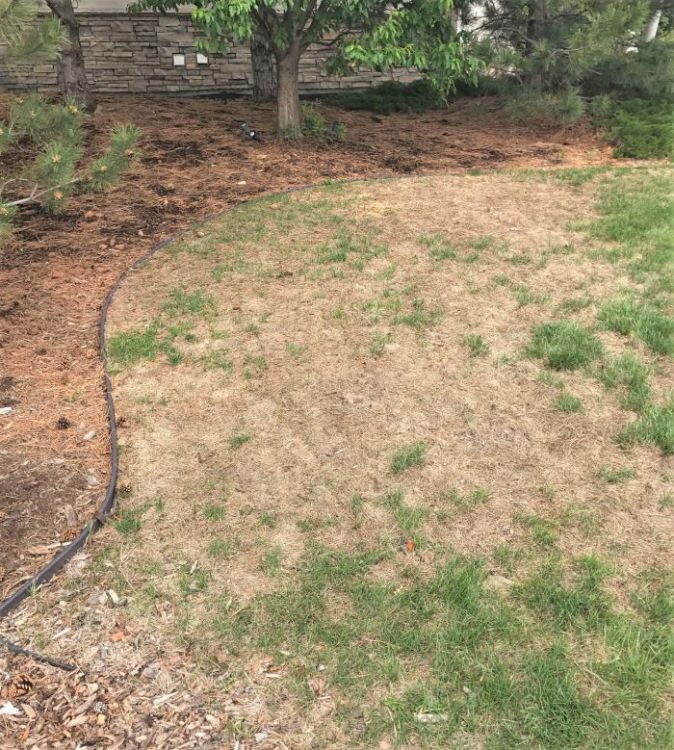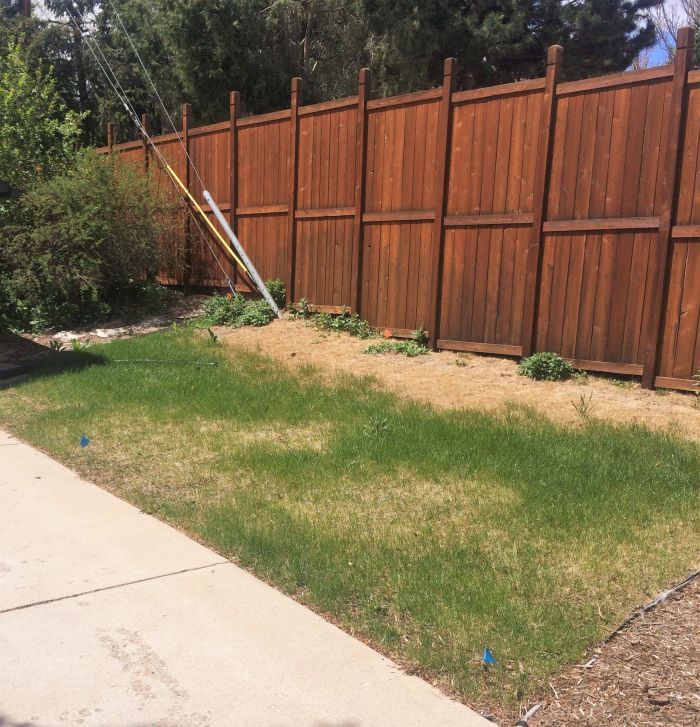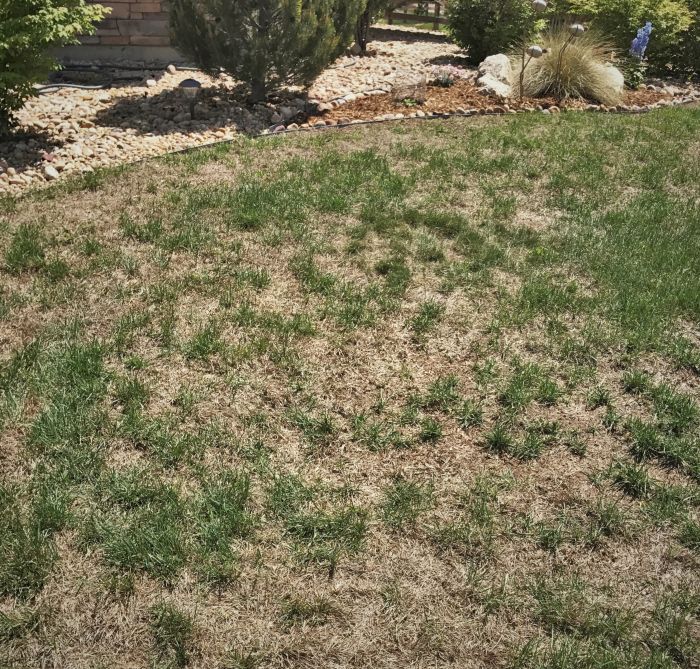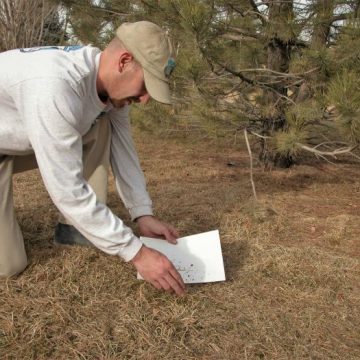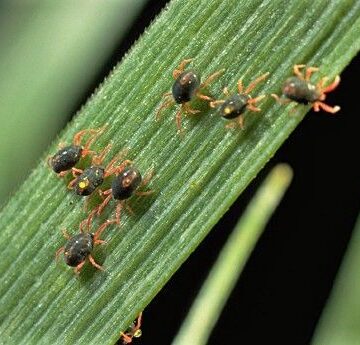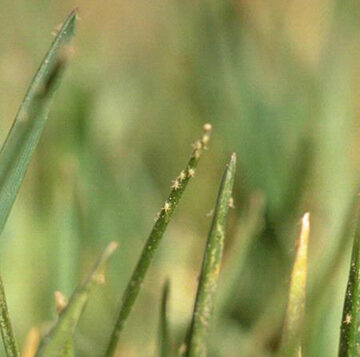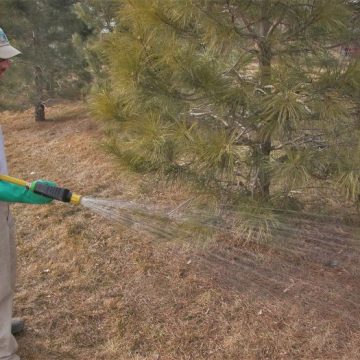LAWN MITES / CLOVER MITES
Lawn Mites, Clover Mites, Grass Mites, or Spider Mites
They are All the Same Thing
Tiny Destructive Insects
Lawn mites are tiny insects that are nearly impossible to see with the naked eye. During dry periods, especially when found indoors, they appear brick-red in color. Spider mites feed on grass roots and blades using their rasping, sucking mouthparts, which can damage the grass to the point of death.
What Time of Year Do Lawn Mites Damage Grass?
Mites generally cause the most damage to grass on south-facing slopes between December and March, with peak damage often occurring in February and March. Typically, homeowners do not discover this damage until the lawn begins to green up in the spring. At that point, they may notice that only certain areas of the lawn have greened up, while other small sections or larger areas may have been killed during the winter months.
Winter is Feeding Season
In the Boulder and Fort Collins areas, lawn mites are typically located on the south-facing sides of buildings, in rock beds, on sun-exposed slopes, and on pine trees. They commonly feed on grass from November to March during warm, dry weather, and they take shelter in pine trees and buildings during cold, wet conditions.
Mite Damage Near a Spruce Tree
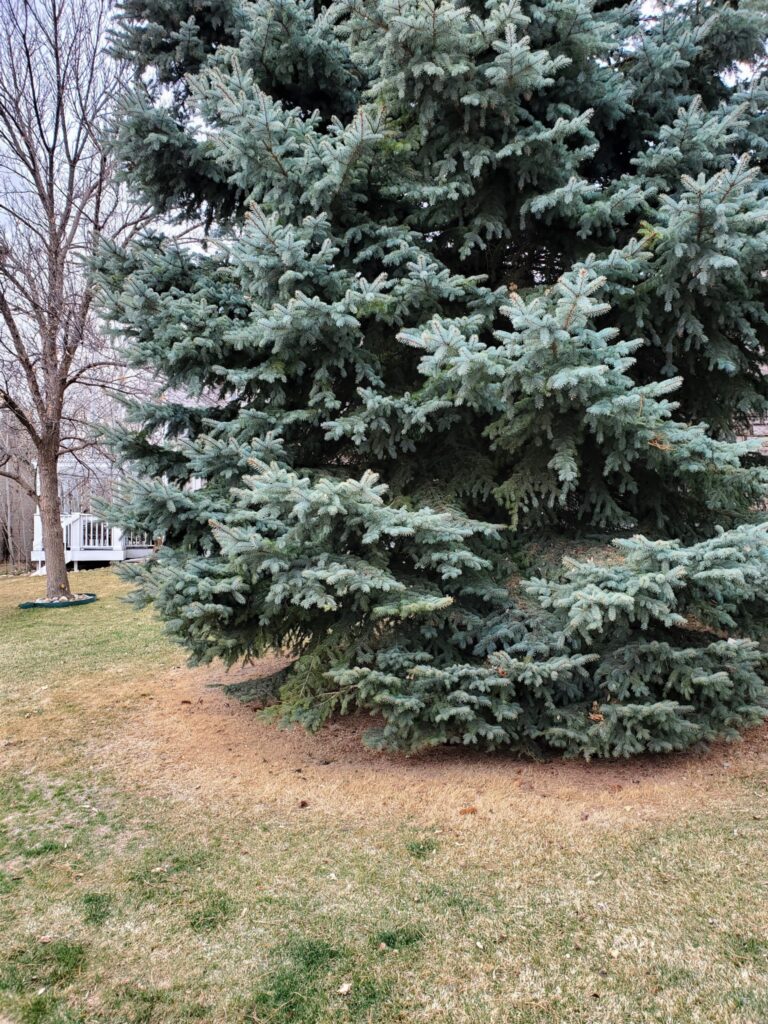
Tiny Insects That Quietly Damage Lawns Over the Winter Months!
Damage to the Lawn is Usually Not Noticeable Until Spring
Mite damage to lawns is usually noticed after the grass has started to green up in the spring. You may observe small sections or large areas that fail to turn green. The affected turf remains visible long after the mites have stopped feeding, making it too late to manage their impact.
Parts of the Lawn are Not Greening-Up
Turf damaged by mites appears as irregularly shaped straw-colored patches while the surrounding lawn continues to turn green. This damage is most common on south or southwest-facing areas of a lawn. Severe damage is more likely to occur on sloped lawns or where grass roots are shallow, often due to improper watering practices during the summer months. Lawns that are watered using the 1-2-3-2-1 technique are 90% less likely to experience mite damage compared to those that are watered daily.
Near Buildings, Fences, or Coniferous Trees
Clover mite damage typically occurs within 5-10 feet of buildings, fences, trees, or other vertical structures. Since mites are extremely small and tend to hide in the turf when disturbed, they can be very difficult to spot.
Spider Mite Size
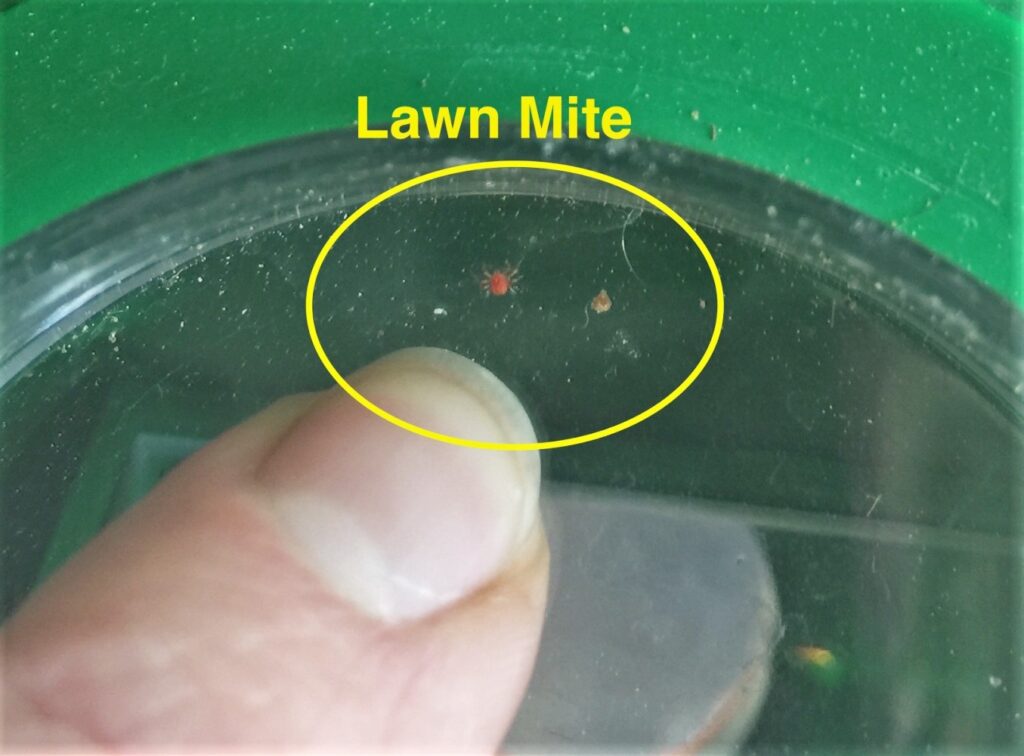
Clover Mite on a Blade of Grass
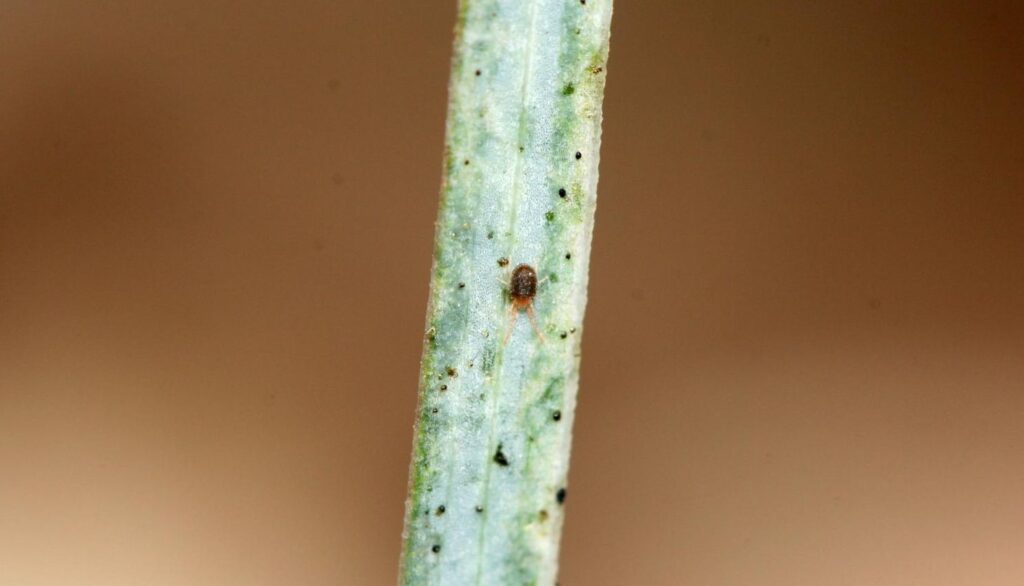
A Closer Look at Clover Mite Damage to Lawns
Severe Mite Damage
Lawn Mite Damage
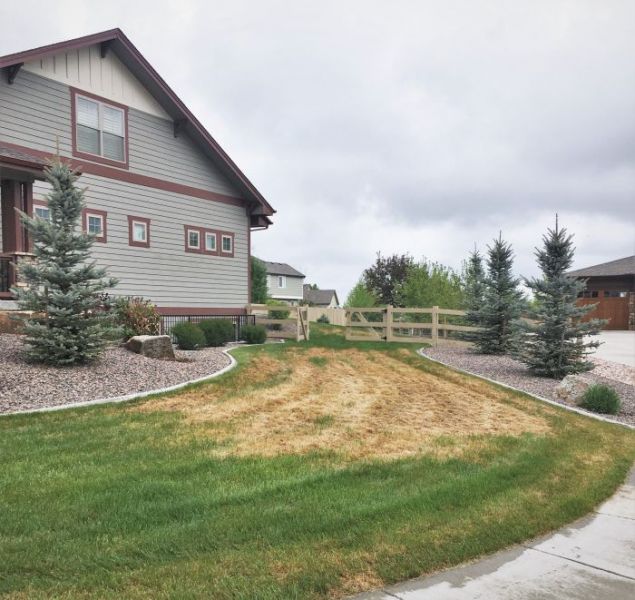
(Click on Image to Expand)
Severe Mite Damage
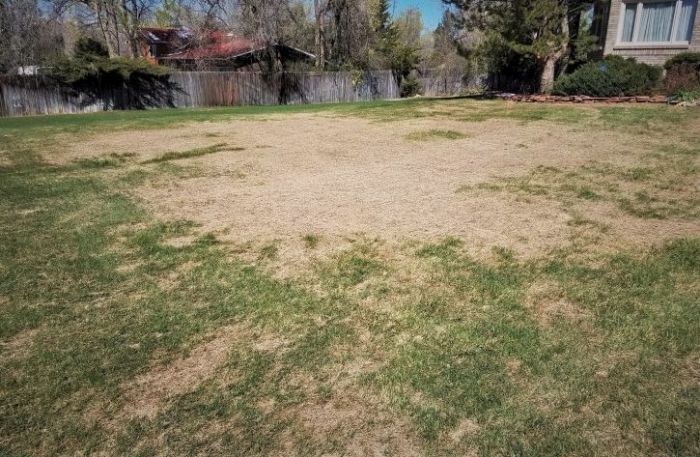
(Click on Image to Expand)
Damage Near a Tree
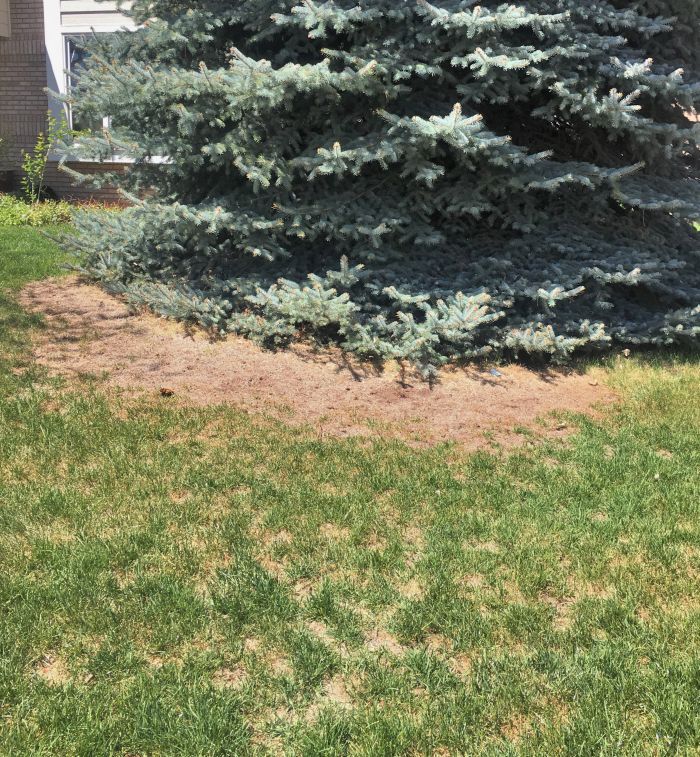
(Click on Image to Expand)
Minor Mite Damage
How to Tell if a Lawn Is Being Attacked by Mites?
Paper Test
Monitoring mite populations in your lawn is quite straightforward. Start by taking a white piece of paper and scraping some grass from an area that may be susceptible to mites. Look closely at the small dots on the paper; if they move, you have mites present.
Better Safe Than Sorry
If you believe your lawn is at risk for spider mite damage and think you may need treatment, you can contact our office to be added to our special contact list. By registering for this list, we will keep you informed during times when grass mites are most likely to be active.
We Will Contact You if a Treatment is Necessary
During spider mite season, we carefully monitor mite populations in Colorado. When activity begins, we will reach out to our customers as a reminder to check their lawns for any signs of mite activity.
Mites Hate Water!
Did You Know that Lawn Mites Can Be Controlled With Water?
Did you know that spider mites do not like water? One effective way to prevent damage from spider mites is to water your lawn during prolonged periods of drought. In fact, you can manage spider mite populations simply by keeping your lawn adequately watered.
Most Active During Winter (December – Early April)
During the winter months, lawn mites tend to be most active. Typically, sprinklers are turned off during this time, and the only way to water the lawn is by using a hose and sprinkler head. It’s especially important to water the south-facing areas of your lawn during warm and dry spells in winter. Regularly watering your lawn is one of the best methods to prevent spider mite damage.
Water Can Kill Mites
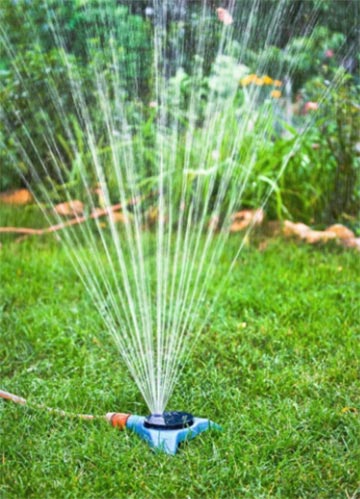
Organic Mite Control for Lawns
Ecotrol – Organic Insecticide
Organo-Lawn offers a specialized treatment for spider mites using an organic insecticide called Ecotrol. This product is an EPA 25b exempt pesticide and is OMRI approved for organic use. Ecotrol is made up of 10% Rosemary Oil, 2% Peppermint Oil, and 88% other ingredients, which include Wintergreen Oil, Vanillin, Lecithin, and Butyl Lactate. These horticultural oils effectively penetrate the soft bodies of mites, destroying their protective exoskeletons.
For optimal results, the organic miticide treatment should be applied while the mites are actively feeding. Each application can eliminate up to 85% of the active mite population. In severe infestations, Organo-Lawn recommends 1 to 3 applications of Ecotrol to completely eradicate mite populations in grassy areas. The exact number of applications needed may vary based on weather conditions. For example, if the winter weather is stormy, cold, and snowy, fewer applications may be necessary.
Pesticide Information
Data Sheets
OMRI Spider Mite Control
Mite Treatment Season Is
Any time that spider mite activity is active. Usually between the months of November and March
Peak Months – February and March
We Control Spider Mites in Lawns!
(303) 499-2000 Boulder or (970) 225-9425 Fort Collins
Spider Mites in Lawns FAQs
Can Spider Mites Be Killed Organically?
Yes, spider mites can be controlled without using chemicals. These soft-bodied insects are highly susceptible to various non-toxic treatments, such as insecticidal soaps or even just plain water. One of the best organic treatments for lawn mites is an insecticidal oil called Ecotrol. This product contains 10% rosemary oil, 2% peppermint oil, and 88% other ingredients, which include wintergreen oil, vanillin, lecithin, and butyl lactate. Ecotrol penetrates the soft bodies of the mites, destroying their protective exoskeletons. However, this treatment will only be effective against mites when they are active.
Spider Mite on a Leaf
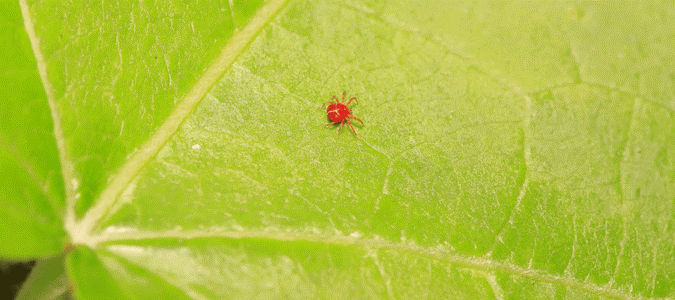
Is the Ecotrol Insecticide Treatment Safe for Pets and Children?
According to the Department of Agriculture we legally cannot claim anything is safe. According to the Department of Agriculture water is not safe. Ecotrol is a OMRI approved organic insecticide. According to the label you can reenter the treated area as soon as the product has dried. All of the ingredients in Ecotrol are considered to be edible.
Macro Photo of Mites
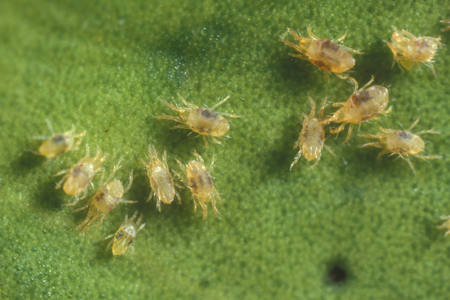
Additional Spider Mite FAQ's
Spider mites are extremely small insects that are nearly invisible to the naked eye but resemble spiders under a microscope. They usually appear red in color.
To identify mites, go to a south-facing area, preferably near a spruce or pine tree. Take some grass and lightly brush it onto a white piece of paper. Then, stare at the dots on the paper. If they start to move, you are likely observing mites.
According to the rules of the Colorado Department of Agriculture, it is prohibited to claim that any substance is safe, including water. However, we can state that Ecotrol is made from essential oils, such as Rosemary Oil (10%) and Peppermint Oil (2%), along with other ingredients (88%) that include Wintergreen Oil, Vanillin, Lecithin, and Butyl Lactate. Ecotrol is 100% organic and is considered the best method for controlling the mite population.
We are legally obligated to display flags since we are claiming to control an insect, which categorizes this as a pesticide.
To prevent mite damage, water your lawn about once a month during the winter. Mites prefer dry areas, and if they do attack the lawn, watering will help replenish its moisture supply.
Mites prefer warm, dry areas and are commonly found on south-facing slopes, often near rock beds or spruce and pine trees. During dry periods, they feed on grass and seek refuge in the pine or spruce trees when it rains or snows. If you notice damage on the south side of your pine trees every year, it is likely that you have a mite problem.
Typically mites do damage to lawns between the months of December and April. The peak damage typically occurs in March or April.
We treat the entire lawn, paying close attention to problem areas, particularly in rocky zones and the lower parts of spruce and pine trees, especially in south-facing areas.
Grass mites are tiny arachnids, similar to spiders, that feed on grass blades by sucking out sap. They are nearly invisible to the naked eye but can cause significant damage to turf, especially during dry, warm conditions.
The most common grass mites include:
- Banks Grass Mite
- Clover Mites
- Warm, dry weather (spring and summer in arid regions).
- Lawns under drought stress or insufficient watering.
- Poorly maintained or stressed grass.
Grass mites feed by piercing plant cells and sucking out sap, leading to dehydration and loss of chlorophyll. Prolonged feeding weakens grass, making it more susceptible to disease and environmental stress.
Yes, grass mites can severely damage a lawn, and in extreme cases, they can even kill it. However, these severe infestations often occur alongside other factors that make the lawn more vulnerable to a mite attack. Extensive damage is especially likely in lawns with shallow-rooted grass that has been improperly watered during the previous growing season. This inadequate watering can weaken the grass, making it more susceptible to dying under harsh conditions.
Grass mites are very small, often less than 1mm in size, making them difficult to see without close observation or magnification.
Some species, like clover mites, can feed on various plants, including ornamentals, but most grass mites are specific to turf. Tree mites are often confused with lawn mites, but they are usually found during the summer months.
